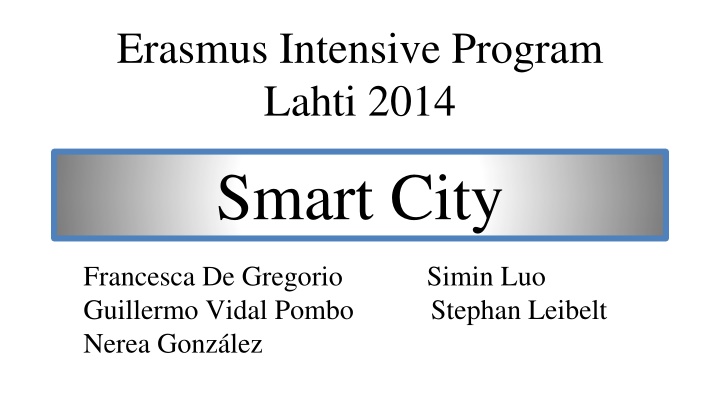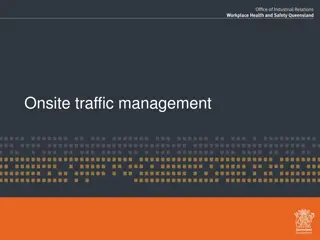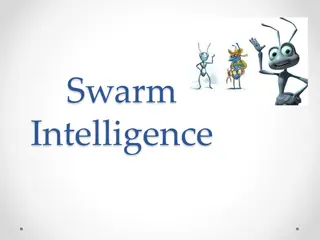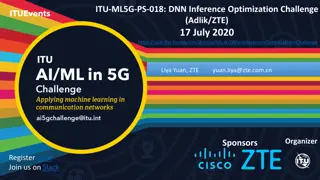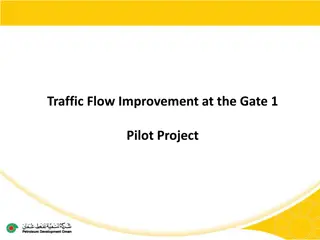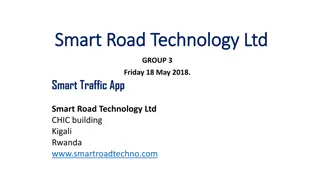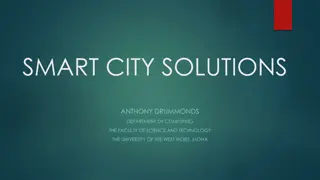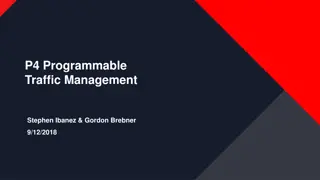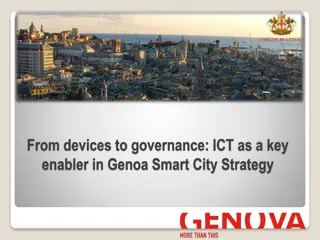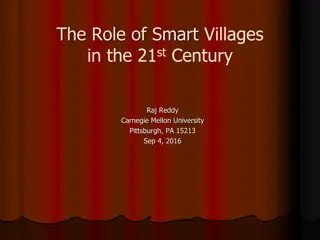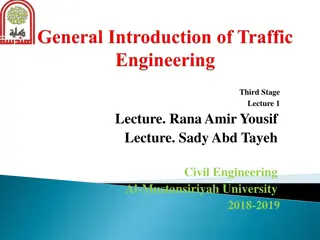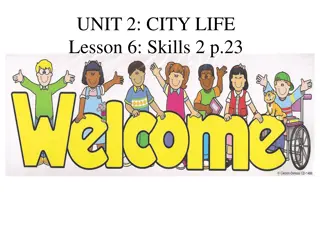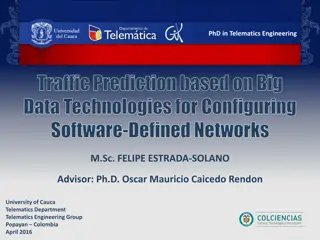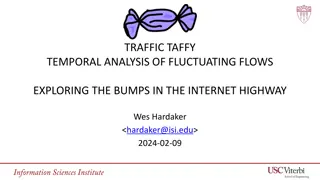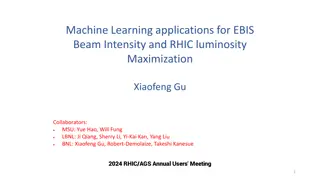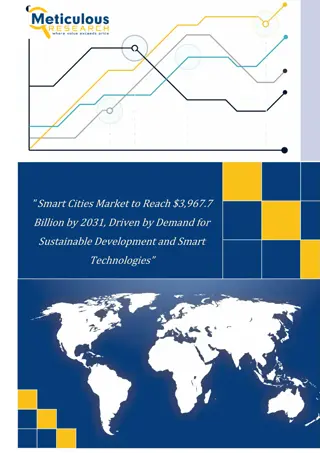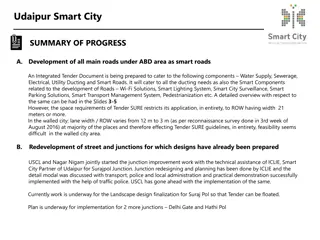Smart City Solutions for Traffic Optimization
Transforming city transportation through smarter traffic management solutions is crucial for enhancing efficiency, reducing environmental impact, and ensuring safety and security. Leveraging technology to predict demand, optimize capacity, and improve traveler experience can lead to a more sustainable and effective urban mobility landscape. Implementing smartphone traffic applications and intelligent infrastructure can revolutionize how cities approach traffic control and congestion reduction.
Download Presentation

Please find below an Image/Link to download the presentation.
The content on the website is provided AS IS for your information and personal use only. It may not be sold, licensed, or shared on other websites without obtaining consent from the author.If you encounter any issues during the download, it is possible that the publisher has removed the file from their server.
You are allowed to download the files provided on this website for personal or commercial use, subject to the condition that they are used lawfully. All files are the property of their respective owners.
The content on the website is provided AS IS for your information and personal use only. It may not be sold, licensed, or shared on other websites without obtaining consent from the author.
E N D
Presentation Transcript
Erasmus Intensive Program Lahti 2014 Smart City Francesca De Gregorio Simin Luo Guillermo Vidal Pombo Stephan Leibelt Nerea Gonz lez
Smart City Creation and connection of human capital, social capital and Information and Communication Technology (ICT) infrastructure in order to generate greater and more sustainable economic development and a higher quality of life
Smart Cities Smart Cities can be identified along six axes: Smart Environment Smart People Smart Mobility Smart Economy Smart Living Smart Governance
Mobility: Traditional Approach TRAFFIC: Crucial element of daily operations in any community or city Increase the capacity of the underlying infrastructure by building more roads and bridges Increase the number of vehicles providing transportation services, such as public buses and trains
Mobility: Smarter Traffic Current city transportation systems and associated infrastructures are strained Smarter Traffic integrates technology and intelligence into the city transportation infrastructure
Objectives for a Smarter Traffic solution Predict demand and optimize capacity, assets and infrastructure Improve the end-to-end experience for travelers Increase operational efficiency while reducing enviromental impact Ensure safety and security
Smartphone Traffic Application MOTIVATION Users know the traffic situation in real time They choose the best route Advantage for each driver Global congestion reduction
Smartphone Traffic Application INITIAL REQUIREMENTS City cameras Built a central system (with all the cameras info)
Smartphone Traffic Application OPERATION Mode 1 Color code on every street depending on the level of congestion Cameras traffic info + City map
Smartphone Traffic Application OPERATION Mode 2 Cameras traffic info + Voice interaction Interactive traffic application based on user preferences
Smartphone Traffic Application OPERATION Mode 2 Say where you want to go Say your driving preferences Fastest route Cheapest route Passing through X The system tells you the best route
Smartphone Traffic Application - Android (most common mobile OS) - Google Speech Api (natural voice input) - Google (or an alternative) maps service for showing routes
Intelligent traffic lights management system Design of an Intelligent traffic lights management system,using the information provided from video cameras
Traditional traffic lights They just show information That information is previously programmed and implemented on them Nowadays, it doesn t make sense, an intelligent system will be more efficient
How can we do this? Using video cameras They will provide important information: Traffic density Type of vehicle Speed
What we do with that information? The information is sent to a central system The system will analyze it, to synchronize the traffic lights in the most efficient way
Technological requirements We will need an embedded system on each traffic light, consisting on: Video camera: able to recognize and track objects and different parameters of the environment Micro-controller: capable of analyze the information achieved by the camera, and send it to central system
Benefits With this system we will have some benefits: - Money on gas - Traffic jam - Pollution + Happiness
Improving the central system -With the central system we will solve most of the traffic problems -There are some special and unpredicted events that we can t handle The central system will consider each traffic light as an intelligent agent, able to make their own choices based on the iformation they get.
Unpredicted increase of roads traffic density Due to special events The system can t predict that The traffic light will increase the time of the green light The other traffic lights will be fixed
Emergency cases such as the passing of high priority vehicles If they don t know the destination If they know the destination The traffic light will detect them The vehicle will communicate with the central system The system will tell the faster way All the traffic lights on the way will turn on the green light The green light will be turned on The other traffic lights will be fixed to avoid accidents
Traffic lights Warning - Passing Emergency Vehicles Normally people know that there is an emergency vehicle passing when they see the vehicle or hear the alarm With the central system, the traffic lights in the way that the emergency vehicle is passing will turn to flash To warn the drivers to reduce speed or change into the same lane if necessary People can know the emergency situation in advance to prepare
Brightness control of traffic lights Use cameras to create a system that allows to decrease the brightness of traffic lights if there are no cars or pedestrians and increase it in the opposite situation with the aim to save energy
Benefits We will avoid traffic jams caused by unpredicted events. The emergency vehicles will arrive faster, so we can save some lives. We will prevent having accidents due to emergency vehicles passing with red lights. We will save energy when the traffic lights are not needed.
